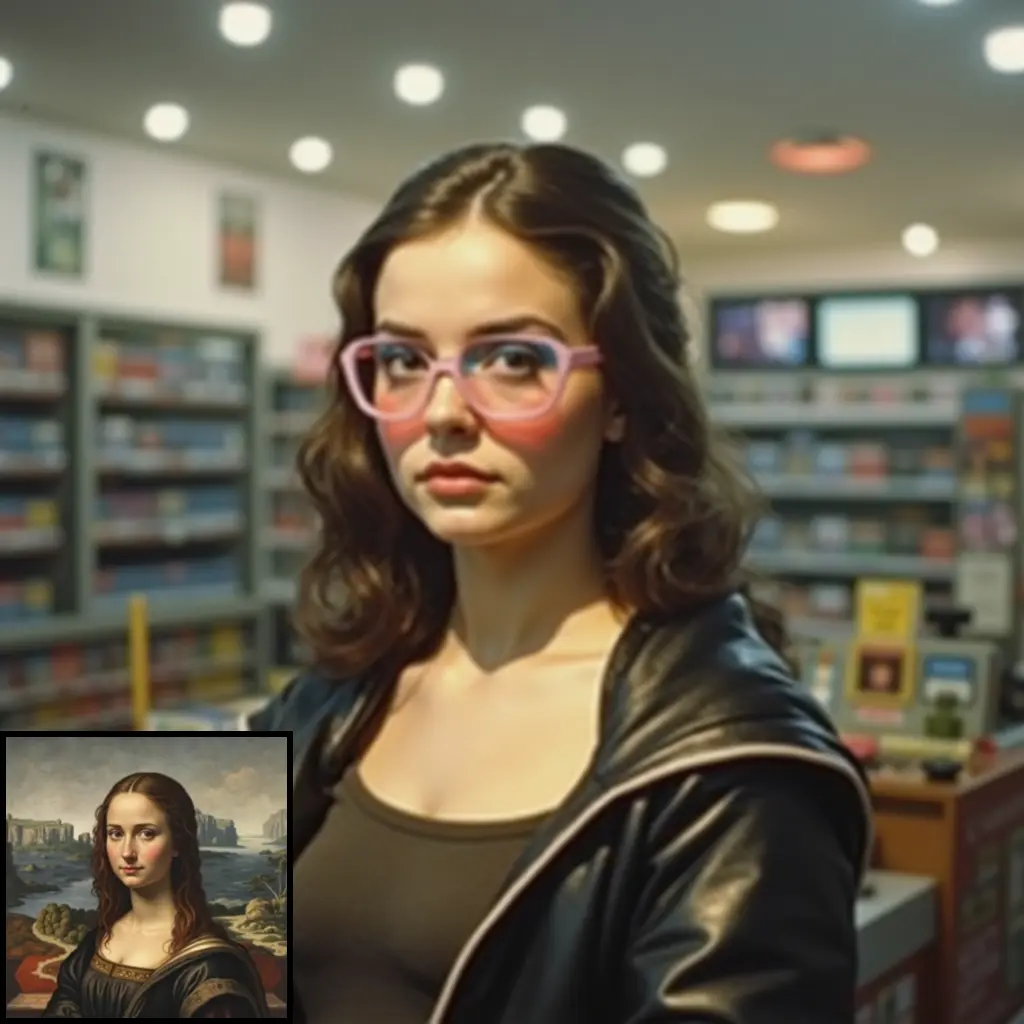ComfyUI Node: SV3D_Conditioning
SV3D_Conditioning
Categoryconditioning/3d_models
ComfyAnonymous (Account age: 833days) Extension
ComfyUI Latest Updated
2025-04-05 Github Stars
73.39K
How to Install ComfyUI
Install this extension via the ComfyUI Manager by searching for ComfyUI- 1. Click the Manager button in the main menu
- 2. Select Custom Nodes Manager button
- 3. Enter ComfyUI in the search bar
Visit ComfyUI Online for ready-to-use ComfyUI environment
- Free trial available
- 16GB VRAM to 80GB VRAM GPU machines
- 400+ preloaded models/nodes
- Freedom to upload custom models/nodes
- 200+ ready-to-run workflows
- 100% private workspace with up to 200GB storage
- Dedicated Support
SV3D_Conditioning Description
Facilitates conditioning for 3D models using CLIP vision models and VAE for art generation.
SV3D_Conditioning:
The SV3D_Conditioning node is designed to facilitate the conditioning process for 3D models within the AI art generation workflow. This node leverages the power of CLIP vision models and VAE (Variational Autoencoder) to encode initial images into a format that can be used for further processing and generation tasks. By providing parameters to control the dimensions, batch size, and orientation of the input images, this node allows for fine-tuning and customization of the conditioning process. The primary goal of SV3D_Conditioning is to generate positive and negative conditioning outputs along with latent representations, which are essential for creating high-quality and contextually relevant 3D art.
SV3D_Conditioning Input Parameters:
clip_vision
This parameter expects a CLIP vision model, which is used to extract visual features from the input image. The CLIP vision model plays a crucial role in understanding the content and context of the image, which is essential for generating accurate conditioning outputs.
init_image
The initial image to be conditioned. This image serves as the starting point for the conditioning process. The quality and content of this image significantly impact the resulting conditioning outputs.
vae
This parameter requires a Variational Autoencoder (VAE) model, which is used to encode the initial image into a latent space. The VAE helps in compressing the image information while preserving essential features, making it easier to manipulate and generate new variations.
width
Specifies the width of the input image. The default value is 256, with a minimum of 16 and a maximum value determined by the node's maximum resolution. Adjusting this parameter allows you to control the resolution of the conditioning process.
height
Specifies the height of the input image. Similar to the width parameter, the default value is 256, with a minimum of 16 and a maximum value determined by the node's maximum resolution. This parameter helps in setting the desired resolution for the conditioning process.
batch_size
Defines the number of images to be processed in a single batch. The default value is 1, with a minimum of 1 and a maximum of 4096. Increasing the batch size can speed up the conditioning process but may require more computational resources.
elevation
Sets the elevation angle for the 3D model. The default value is 0.0, with a range from -180.0 to 180.0. This parameter allows you to adjust the vertical orientation of the model, which can be useful for creating different perspectives.
azimuth
Sets the azimuth angle for the 3D model. The default value is 0.0, with a range from -180.0 to 180.0. This parameter allows you to adjust the horizontal orientation of the model, providing more control over the viewing angle.
elevation_batch_increment
Defines the increment value for the elevation angle when processing multiple batches. The default value is 0.0, with a range from -180.0 to 180.0. This parameter is useful for creating variations in the elevation angle across different batches.
azimuth_batch_increment
Defines the increment value for the azimuth angle when processing multiple batches. The default value is 0.0, with a range from -180.0 to 180.0. This parameter helps in generating variations in the azimuth angle across different batches.
SV3D_Conditioning Output Parameters:
positive
The positive conditioning output, which contains the encoded features of the initial image. This output is used to guide the generation process towards desired characteristics and styles.
negative
The negative conditioning output, which contains the encoded features that should be avoided during the generation process. This output helps in steering the model away from unwanted characteristics and styles.
latent
The latent representation of the initial image, encoded by the VAE. This output is a compressed version of the image that retains essential features, making it suitable for further manipulation and generation tasks.
SV3D_Conditioning Usage Tips:
- Ensure that the initial image (init_image) is of high quality and relevant to the desired output to achieve the best conditioning results.
- Adjust the width and height parameters to match the resolution requirements of your specific project, keeping in mind the computational resources available.
- Experiment with different elevation and azimuth angles to create unique perspectives and variations in your 3D models.
- Utilize the batch_size parameter to process multiple images simultaneously, which can save time and improve efficiency.
SV3D_Conditioning Common Errors and Solutions:
"Invalid image dimensions"
- Explanation: The width or height of the input image is outside the allowed range.
- Solution: Ensure that the width and height parameters are within the specified range (16 to the node's maximum resolution).
"Batch size exceeds limit"
- Explanation: The specified batch size is greater than the maximum allowed value.
- Solution: Reduce the batch size to a value within the allowed range (1 to 4096).
"Invalid elevation or azimuth value"
- Explanation: The elevation or azimuth angle is outside the allowed range.
- Solution: Adjust the elevation and azimuth parameters to values within the range of -180.0 to 180.0.
SV3D_Conditioning Related Nodes
RunComfy is the premier ComfyUI platform, offering ComfyUI online environment and services, along with ComfyUI workflows featuring stunning visuals. RunComfy also provides AI Playground, enabling artists to harness the latest AI tools to create incredible art.



